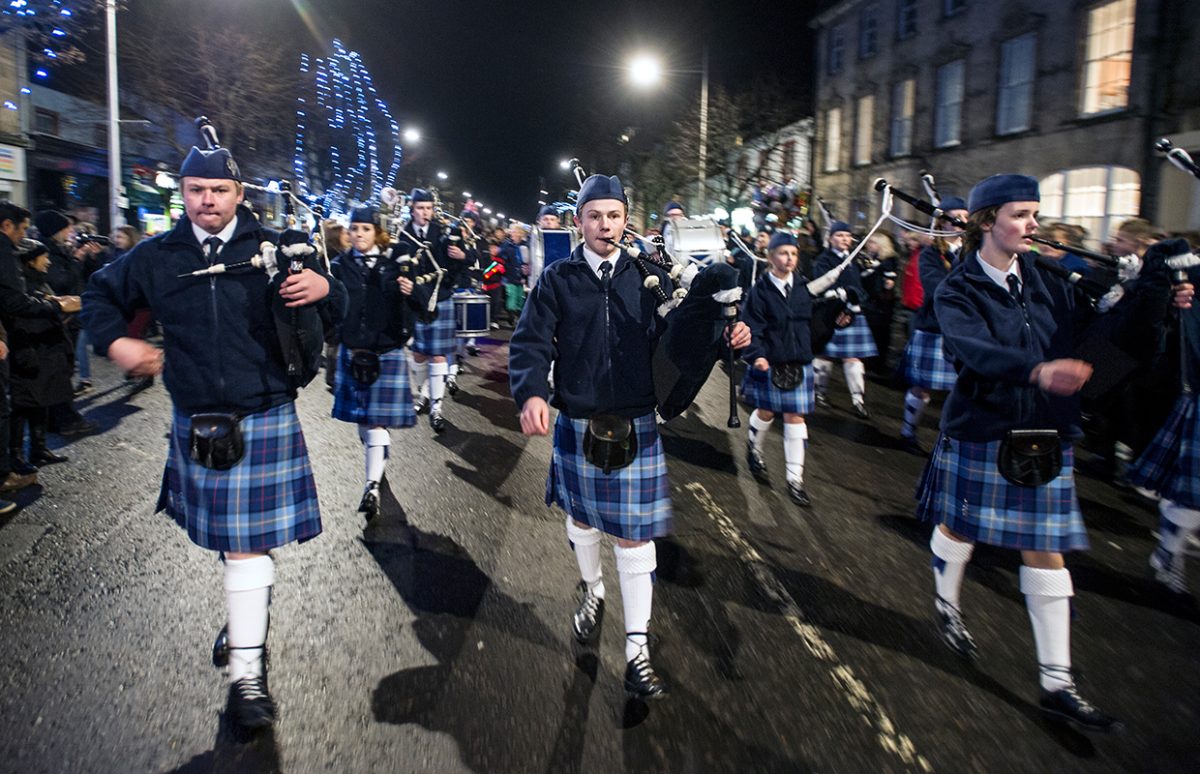St Andrew's Day, 30 November, is the Scottish national day. Here are a couple of resources to talk about the celebration with collège classes, and a suggestion to get everyone moving!
This BBC Newsround article written for children has "Everything you need to know about St Andrew's Day". It's usable from A2. You may want pupils to skip down past the part about the actual saint.
This video from the Scottish tourist board, VisitScotland, has pretty succint information and could be used from A2+, or just concentrate on the images with lower levels, and use them to sollicit or introduce words like kilt, sporran, haggis and dancing.
There's more information on the VisitScotland website, including some great songs to play to celebrate the day, including "Auld Lang Syne" and Runrig's toetapping rock version of "Loch Lomond".
If you are working on the United Kingdom, you could have groups work on the national days of the home nations, and then pool their information, compare and contrast.
Pupils can follow the link at the bottom of the page to find out about St Patrick's Day (17 March, the national day of Ireland and also celebrated in Northern Ireland). They can search on the Newsround site to find out more about the national days of the other two British nations: St David's Day (1 March) in Wales and St George's Day (23 April, also Shakespeare's birthday) in England. (A search on a Newsround page just searches within this mini-site, not the entire BBC site.)
Ready to Dance?
Ceilidh (kay-lee) dancing is popular with young and old in Scotland — it's pretty much obligatory at weddings! And it's a really authentic language learning activity. At a real ceilidh, there is always a caller who teaches the dance, and generally calls out the moves in real time when people are dancing. Instructions as usual are great for teaching modals and imperatives. You could start out as the caller, then progressively let pupils take over.
To give pupils a taste, you can show them the "Ceilidh Experience" immersive video from VisitScotland. They show three dances but the Gay Gordons isn't the best for a class activity as it's a couples dance. You would be better with The Dashing White Sergeant (groups of 6) or Strip the Willow (groups of 8 or more). When the instructions say to "set", it just means you turn to the other dancer and you each do a little dance to each other. You can see it clearly in this video from Sandon Scottish Country Dance Group.
This could of course form part of an EPI with your sports or art history colleagues. It fits in well with Corps, santé, bien-être, sécurité , Culture et création artistiques, or Langues et cultures étrangères, and in particular with the curriculum for Histoire des arts, theme: État, société et modes de vie (XIIIe-XVIIIe s.) > Danse populaire, danse de cour, danse stylisée.
Tag(s) : "British culture" "Corps santé bien-être sécurité" "dance" "digital resources" "EPI" "holidays" "Scotland" "St Andrew" "United Kingdom" "video"






